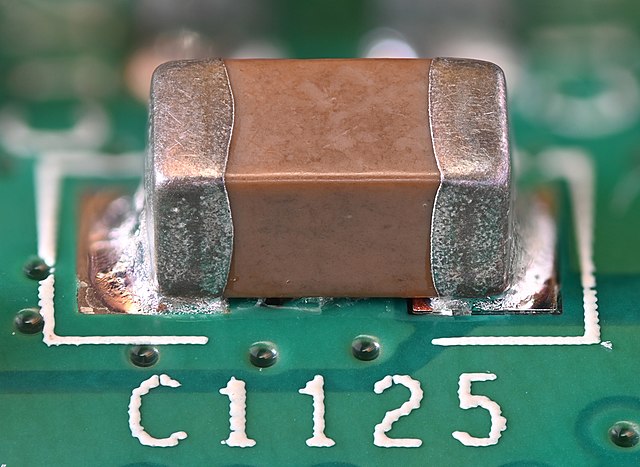In an electric circuit, instantaneous power is the time rate of flow of energy past a given point of the circuit. In alternating current circuits, energy storage elements such as inductors and capacitors may result in periodic reversals of the direction of energy flow. Its SI unit is the watt.
The blinking of non-incandescent city lights is shown in this motion-blurred long exposure. The AC nature of the mains power is revealed by the dashed appearance of the traces of moving lights.
In electrical engineering, a capacitor is a device that stores electrical energy by accumulating electric charges on two closely spaced surfaces that are insulated from each other. The capacitor was originally known as the condenser, a term still encountered in a few compound names, such as the condenser microphone. It is a passive electronic component with two terminals.
Capacitor
Battery of four Leyden jars in Museum Boerhaave, Leiden, the Netherlands
A simple demonstration capacitor made of two parallel metal plates, using an air gap as the dielectric
A surface-mount capacitor. The plates, not visible, are layered horizontally between ceramic dielectric layers, and connect alternately to either end-cap, which are visible.





